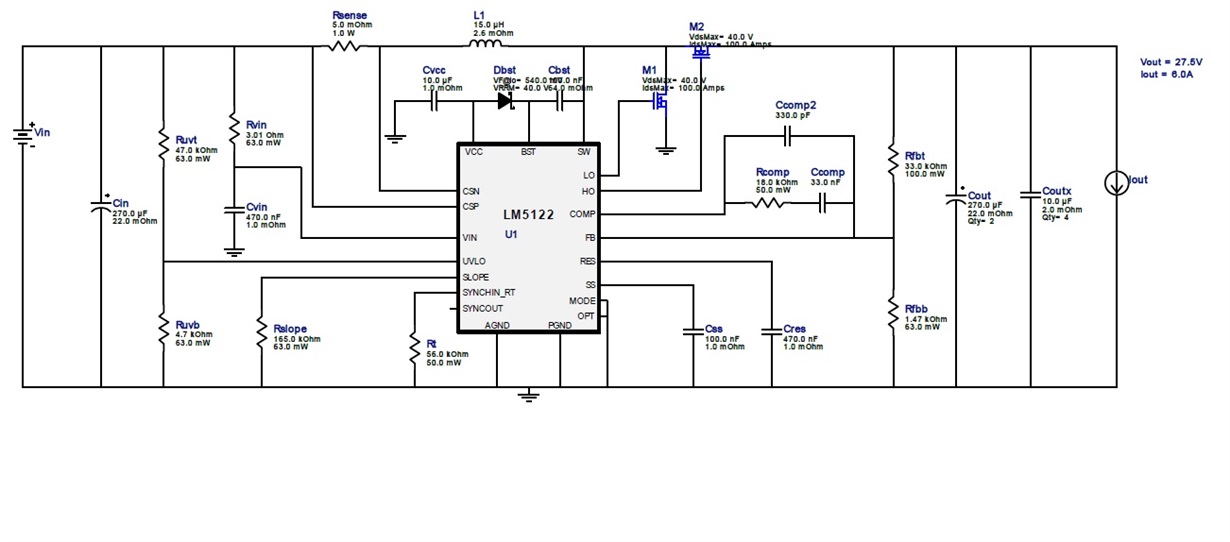Other Parts Discussed in Thread: CSD18509Q5B, CSD18503Q5A
Tool/software: WEBENCH® Design Tools
My initial design based on an LM5122 had the following specifications: Vin [18V-22V] Vout 24V 8A.
The specifications have changed, but I would like reusing the same PCB preferably keeping the same inductor: Vin[16V - 28V] Vout 28V 8A.
I run WEBENCH again with the new specifications, the switching frequency has dropped from 160kHz down to 90kHz and the inductor has been increased from 15uH to 33uH and is not compatible with my existing PCB. I set the switching frequency to 160kHz in the design option in order to keep the 15uH inductor but I now get warning message about the maximum temperature reached by the LM5122.
The warning clears if I reduce the maximum load to 7A, which would be good enough for me, but I now think there is a risk with the LM5122 and I am not sure my design is safe.
It seems the overheating of the LM5122 is caused by the increase of the input voltage but I don't know how to evaluate the maximum power dissipated in the LM5122.
I evaluated gate drive loss to ~0.22W (gate charge 140nC high side switch, 25nC low side switch).
Would it be possible to help me evaluating if my modified design is safe and if not what needs modifying. Thanks.
M1 CSD18503Q5A, M2 CSD18509Q5B


